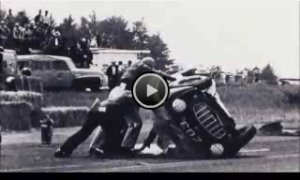![Welcome to [Race Image USA] - [The Leader in Used Professional](http://auto-racing-blog.com//img/welcome_to_race_image_usa.jpg)
Used Racing Helmets
 Snell-direct-cost is only a small part of cost related to making Snell certified helmets. Once a helmet has been accepted into the Snell certification program, the Foundation charges the manufacturer for test fees, acquisition cost of random samples, and for each Snell Certification label that goes into each certified helmet. The majority of the cost is what a manufacturer must invest in a good quality system in terms of hardware, equipment, and personnel to maintain the consistency and reliability of producing good helmets. However, these costs along with every other production cost get passed along to you the consumer.
Snell-direct-cost is only a small part of cost related to making Snell certified helmets. Once a helmet has been accepted into the Snell certification program, the Foundation charges the manufacturer for test fees, acquisition cost of random samples, and for each Snell Certification label that goes into each certified helmet. The majority of the cost is what a manufacturer must invest in a good quality system in terms of hardware, equipment, and personnel to maintain the consistency and reliability of producing good helmets. However, these costs along with every other production cost get passed along to you the consumer.
The Foundation spends the biggest part of its income on operating the certification and testing programs. There are all of the standard operating costs such as rents and staff, as well as maintenance on its test facility in California, equipment repair and replacement, and all the other expenses associated with operating a non-profit business. The rest goes to the Foundation's extensive educational programs and research projects.
Snell Helmet Certification
The protective capability of a particular helmet is difficult to measure. One can quickly judge a helmet for style and price, and with only a little effort for fit and comfort as well. It is much more difficult to gauge what a helmet can do when someone's skill, experience and every other precaution have failed, when his helmet is the only thing between his head and a violent collision. The Snell Foundation knows. We destroy thousands of helmets every year to find out. Snell Certification is our assurance that a helmet has measured up to the highest standards for protective performance time and again.
Snell Standards are the most demanding. They are set to levels of protective performance that only the best, most protective headgear will meet. But Snell Certification is more than high standards, it is testing. Helmets must first pass Snell certification testing by Snell technicians in Snell labs to qualify for Snell programs. Then samples of these helmets regularly acquired directly from retailers and distributors must continue to pass test requirements in order to remain in the Snell programs. Snell Certification is your best assurance that your helmet will perform its most important function: save your life when all your judgment, skill and luck have failed to keep you from harm.
Snell certified helmets are available in almost every price range. Other features such as style and comfort are also important in determining helmet price. However, building consistently protective performance into a helmet does cost money. The costs are in the design and development, the materials and, most of all, in quality control. Snell certification is your best assurance that the manufacturer has made, and continues to make this investment in your safety.
The Snell Standards are voluntary. Some helmet manufacturers do not believe that they need Snell to demonstrate that their products are among the best protective headgear. Others believe that they need only to produce helmets that meet Government or consensus helmet standards and some try and just can not make the grade. A very few helmet makers are truly inconsiderate of the consequences of making an inferior safety product (they are not usually around very long).
Snell does not dismiss out of hand any helmet design that strays from the conventional. Snell does not point out any design specifications other than general requirements in its standards. We are, however, always concerned with innovations and new designs that may effect helmet's ability to protect the wearer, or in some cases helmet's potential to cause injury. At present the Foundation has not had the opportunity to test any of the flip up front type helmets for certification. We do not find any fault with these designs as long as they are used according to the manufacturers instructions and meet all of the requirements of the standard. We will also certify any size of helmet as long as it meets the same requirements as any other Snell certified helmet.
While helmets are primarily a protective device, the true protective capabilities of a helmet, if needed will only come into play for about 2 to 4 milliseconds during the lifetime of the helmet. This leaves a lot of time for that helmet to be doing nothing more than sitting around on a user's head. Producing a product that meets the standards is not really very difficult. Producing a helmet that people will buy and wear, and will consistently meet the standards is significantly more difficult. The Snell Standards do not measure factors like comfort, ventilation, brand recognition or style, and only indirectly look at fit, weight, materials and workmanship. These are factors that frequently drive helmet cost.









